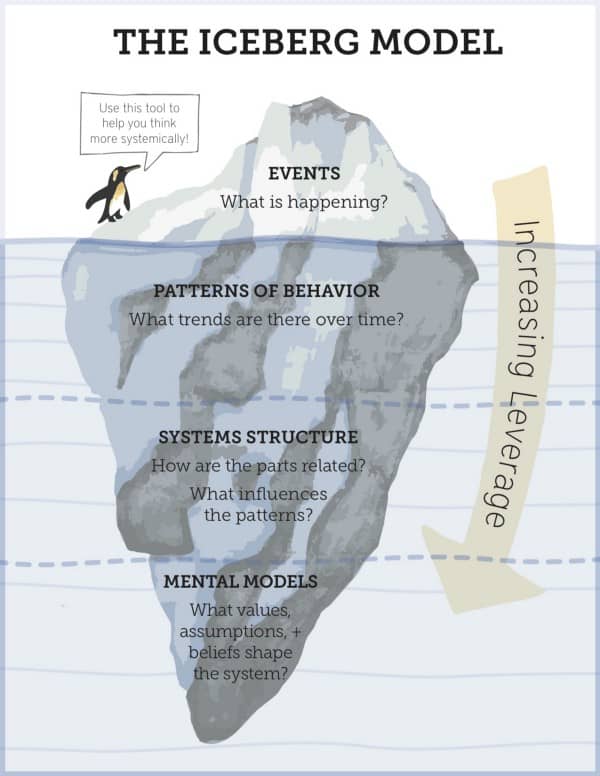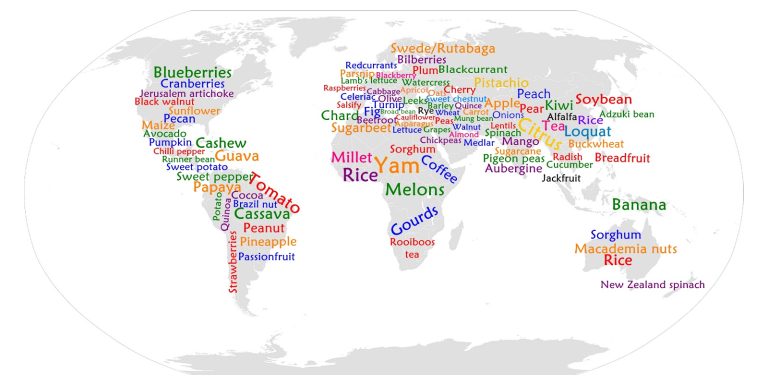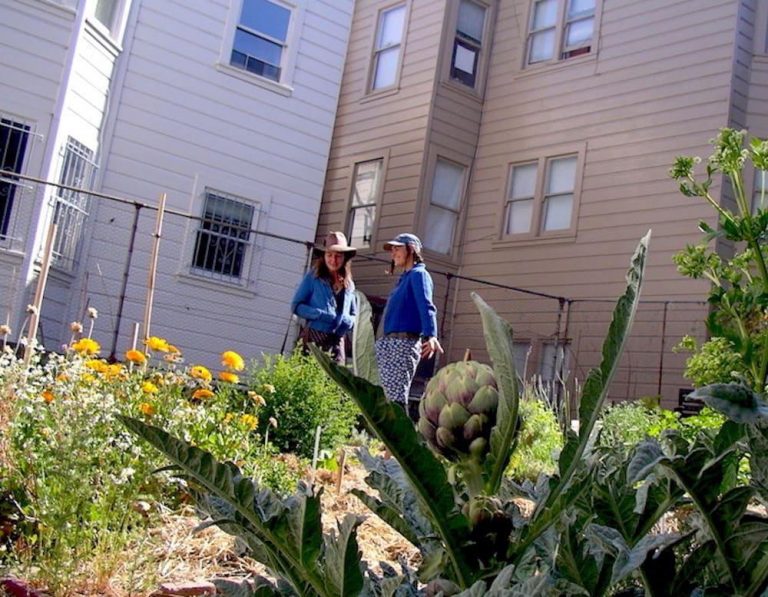What would a regenerative livelihood look like to you?
By Karryn Olson

Recently, I’ve been breaking down the term “regenerative right livelihood” to clarify the concepts so we can discuss and evolve them, and apply them in our lives.
In a prior post, I shared some of my thinking about how the simple but profound concept of “right livelihoods” can help shift society towards a more life-honoring economy.
Today, I want to share some criteria that I believe can make our right livelihoods themselves more regenerative.
But first, let’s say it like it is….
The dominant economy is degenerating ecosystems and communities, endangering life on our planet.
Why? How is it that we have created an economy that could lead to our own demise?

To answer that, let’s use the iceberg model, a tool often used by systems thinkers to understand problems. This approach helps us go beyond looking at “the surface” of current problematic events (such as utter political impotence to curb greenhouse gas emissions) to look for underlying patterns of behavior, and the structures that give rise to them. Our goal is to “daylight” the mental models that give rise to these systems and patterns of behavior that actually cause the events.
So, what are the mental models that give rise to a degenerative economy?
I’d love to hear your thinking on this. Share them in the comments below.
I’ve thought about this a lot, and my conclusion is:
The root cause is a dominant worldview that sees Earth and people as resources to be extracted – in service to empire building.
Whoa, that’s heavy, I know.
The good news is that when we realize that our current mental models aren’t a good fit for the current reality, we can discard them like clothes we have outgrown, and choose new ones.
What if instead, our economy was underpinned by the belief that Earth is a living planet?
What if we built economic systems upon values that consider a “good” business to be one that enhances the health and integrity of living systems and communities?
These mental models would likely give rise to systemic structures like international regulations that enshrine the precautionary principle, and global economic indicators that value natural capital as an asset for all of humanity, and measure economic performance in terms like Gross National Happiness. Ecological design and cradle-to-cradle technologies would likely be the norm.
And hopefully, even these strategies would give to more adaptive, regenerative thinking.
Or, what if we strive to understand and include in our economies the worldviews common to many indigenous communities?
The Haudenosaunee worldview, as explained by Joyce Tekahnawiiaks King, holds that water is sacred.
“From the perspective of the traditional Haudenosaunee, we speak in
terms of responsibilities with respect to water, not in terms of water
rights. This shift in emphasis is not casual in our eyes and takes us to the
central premise of this paper. From time immemorial, we have held the
view that the “law of the land” is not man-made law, but a greater natural
law, the Great Law of Peace. This law, in our view, is divine. The
Haudenosaunee have a deep respect for the waters of the Earth. For example, one of the root words for “rain” in Mohawk means expensive, or precious or holy. Culturally, we would not abuse this resource. Our society treats and cares for the waters as a sacred element so that water
remains pristine.’”
How might we live and work if our environments were sacred to us and we had to ensure they thrive?
Likewise, if we shift away from the concept of rights to land, what societies might we then build?
What if we decide that together, we can build an economy based on compassion and equity?
These changes in world views would change everything.
The next, difficult question then, is:
How do we change world views?
The late systems scientist Donella Meadows wrote this:
“In a nutshell, you keep pointing at the anomalies and failures in the old paradigm, you keep coming yourself, and loudly and with assurance from the new one, you insert people with the new paradigm in places of public visibility and power. You don’t waste time with reactionaries; rather you work with active change agents and with the vast middle ground of people who are open-minded.”
Briefly re-phrased:
We speak and live regenerative paradigms into being.
So far, in my work, I’ve identified four criteria that can help us ensure our right livelihoods are promoting these life-enhancing paradigm shifts:
Regenerative right livelihoods
- are based on learning from and co-creating with ecosystems
- are rooted in equity and justice, and a vision of each person developing the skills to co-create a future in which all can thrive
- honor and include the insights of historically marginalized people as wisdom-keepers whose vital perspectives enable us, together, to find better solutions
- incorporate science and appropriate technology, but also include other ways of knowing, and value the caring work that is the core economy.
YOUR LIFE’S WORK IS A PARTICULARLY POWERFUL WAY to speak and live a regenerative paradigm into life, because you can lend your expertise and a good chunk of your life energy in service to co-creating our regenerative future.
If through our livelihoods we can enable many small-scale regenerative solutions to self-organize into regenerative economies in our regions, then we will truly be able to speak loudly and from assurance from a new paradigm, and we will insert people with the new paradigm in places of public visibility and power.
Let’s do it!
I’ll look forward to hearing your insights on this how our livelihoods can be more regenerative.



